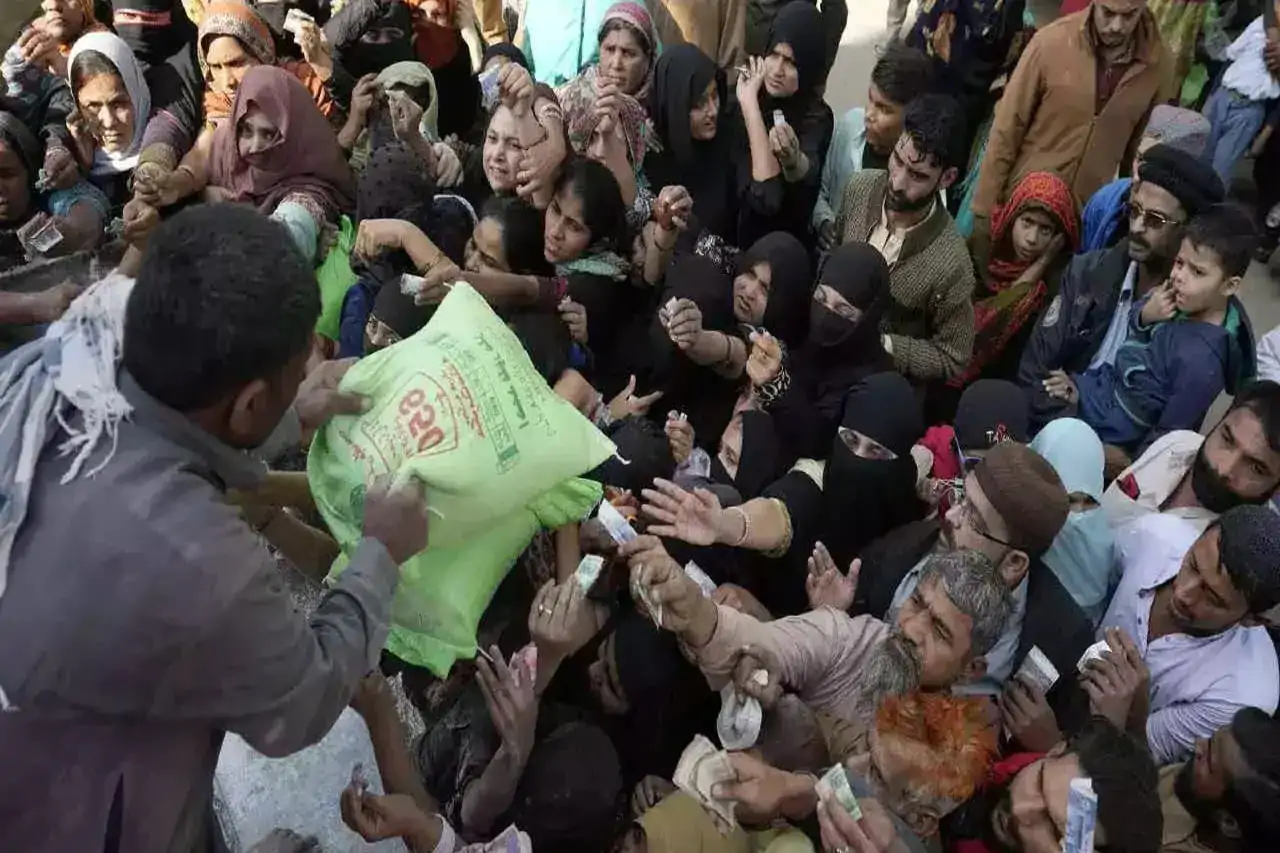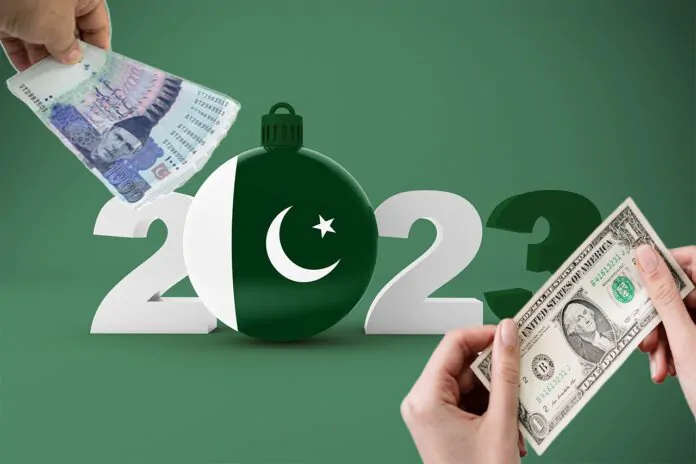India History Of Jammu And Kashmir
Pakistan’s economic collapse encourages more people to take risks and travel to Europe
Trade Deficit:- US Dollar To Pakistani Rupee Rate 307.38 Today.Imagine you have a hard-earned savings account, and you’re looking for a place to invest it for a better return. You’ve heard that Pakistan offers great investment opportunities, but is it really worth the risk? Well, buckle up folks, because we’re about to dive into the ins and outs of Pakistan’s financial situation and what it means for the rest of the world.
We’ll look at the factors contributing to the risk, including its historical context, the potential impacts of default on Pakistan, and regional stability.

First, let’s take a step back in time and look at Pakistan’s economic history. This is a story of ups and downs, highs and lows, and a whole lot of “what were they thinking?” moments.
Pakistan was born as a nation in 1947 and since then, its economy has been on a rollercoaster ride. There were times when it seemed like the country was on the path to prosperity, but then something would happen and it would be back to square one.
In the 1950s and 60s, Pakistan’s economy was doing pretty well. It was one of the fastest-growing economies in the region and had a thriving agricultural sector. But then the wars with India happened and the economy took a heavy hit. And just when things started to pick up again, the oil crisis of the 1970s happened and the country was plunged into a financial crisis. Fast forward to the late 2000s, and the country was hit by the global financial crisis.
And so it goes, with the economy experiencing highs and lows over the years. But let’s not get too bogged down in the past, we’ve got a lot of ground to cover today. We’ll just say that Pakistan’s economic history is definitely not for the faint of heart So, key factors contributing to Pakistan’s default risk are trade deficit, Government Debt, low foreign reserves, and a weak currency.
Trade Deficit:-In January 2023 Pakistan recorded a $2.6 bn deficit in the trade balance. But what exactly is a trade deficit? Well, imagine you’re at a store and you’re buying more than you’re selling. That’s kind of like a trade deficit. The country is importing more goods than it’s exporting, which means it’s spending more money than it’s making.
Having a trade deficit can pose several risks to the economy. For starters, it means that the country is relying on foreign sources of goods and services, which makes it more vulnerable to external factors such as changes in the global market or fluctuations in currency exchange rates. It also means that the country is losing out on potential export revenue, which could be used to boost the economy.
But the real kicker is when the country has to pay for all of these imports mostly in foreign currency, and if it doesn’t have enough foreign reserves to pay for its imports, it will have to borrow money from other countries or international organizations. This, in turn, can increase the country’s debt levels and make it more difficult to repay its loans in the future.
Government Debt:-In economics, the debt-to-GDP ratio is a commonly used indicator of a country’s overall financial health. It measures the total amount of government debt relative to the size of the economy. A high debt-to-GDP ratio can indicate that a country is facing financial difficulties, as it means that a large portion of its resources is being used to service debt obligations, leaving less money for other important expenditures.
Now, let’s take a look at Pakistan’s debt-to-GDP ratio.
As of 2023, Pakistan’s government debt stands at over 80% of its Gross Domestic Product (GDP).This is higher than the average debt-to-GDP ratio seen around the world, which is typically between 50-60% for emerging economies.

So, what does this mean for Pakistan? Well, a high debt-to-GDP ratio can pose a significant risk to the country’s economy. It means that the government has to devote a large portion of its revenue to servicing its debt obligations, leaving less money for other important expenditures such as infrastructure projects, military expenditures, and social welfare programs.
In addition, a high debt-to-GDP ratio can also make it more difficult for a country to secure loans from international financial institutions, as lenders may be concerned about the country’s ability to repay its debts. This, in turn, can further limit the government’s ability to invest in critical infrastructure and development projects, which can have negative impacts on the country’s overall economic growth.
Low Foreign reserves:-Foreign reserves refer to the amount of a country’s foreign currency holdings that are held by its central bank. These reserves are important for a number of reasons, including providing a cushion against economic shocks and allowing a country to manage its currency exchange rate.
In the case of Pakistan, the country has been facing a persistent problem of low foreign reserves in recent years. As of January 2023, Pakistan’s foreign reserves stand at just over $3 billion, which is far below the amount needed to cover its current account deficit. To put things into perspective,
let’s look at some examples of foreign reserves in other emerging economies:-
● As of 2023, China has foreign reserves of over $3.1 trillion, making it one of the largest holders of foreign reserves in the world.
● India’s foreign reserves stand at around $560 billion as of 2023, which is relatively high compared to other emerging economies.
● Brazil’s foreign reserves are around $290 billion as of 2023, which is relatively low compared to other emerging economies.
● Russia’s foreign reserves, despite the western sanctions, stand at around $600bn.

So, what does this mean for Pakistan? Well, low foreign reserves can have a number of negative impacts on the country’s economy. For one, it can make it more difficult for the country to secure loans from international financial institutions, as lenders may be concerned about the country’s ability to repay its debts. This, in turn, can further limit the government’s ability to invest in critical infrastructure and development projects, which can have negative impacts on the country’s overall economic growth.
In addition, low foreign reserves can also make it more difficult for the country to manage its currency exchange rate. This is because a shortage of foreign currency can put upward pressure on the value of the local currency, making exports more expensive and less competitive in international markets. This, in turn, can further exacerbate the country’s trade deficit, which refers to the amount by which its imports exceed its exports.
Overall, the problem of low foreign reserves in Pakistan is closely linked to the country’s trade deficit and highlights the need for policymakers to take steps to improve the country’s overall financial stability. This can involve implementing reforms to reduce the trade deficit, such as increasing exports and reducing imports and improving the overall health of the country’s economy.
Weak Currency:-Yet another key factor is Pakistan’s weak currency. Simply put, a weak currency means that the value of the currency relative to other currencies is low. In the case of Pakistan, the value of the rupee has been declining, making it less valuable relative to other currencies.
Now, you might be thinking, “Who cares? As long as I have enough rupees, I’m good, right? Well, not exactly. A weak currency has far-reaching implications, it’s not just about the value of the cash in your wallet.
Let’s start with the earlier-mentioned trade deficit. When the value of the currency is low, it makes imports more expensive and exports cheaper. This can exacerbate the trade deficit and make it even more difficult for the country to reduce its trade deficit and achieve economic stability.
Then the government debt comes into play. When the value of the currency is low, it becomes more expensive for the government to repay its debt, as it has to use more rupees to pay back the same amount of debt. This puts additional pressure on the government’s finances and increases the risk of default.
And let’s not forget about those low foreign reserves. A weak currency makes it more difficult for a country to attract foreign investment, as investors are less likely to invest in a currency that is declining in value. This can lead to a further decline in foreign reserves, making it even more difficult for the country to finance its spending.
So, there you have it, folks. The interplay between a weak currency, trade deficit, government debt, and low foreign reserves. It’s like a spider web of economic woe.But don’t panic, not all is hopeless. By understanding the underlying factors and implementing effective reforms, it is possible for a country to turn things around and achieve economic stability.
And, the million-dollar question:- What happens if Pakistan fails to make debt payments?Let’s start with the effects on the country’s economy. If Pakistan defaults on its debt, it would likely result in a significant increase in borrowing costs for the government and the private sector. This would make it more expensive for the government to finance its spending and for businesses to finance their operations. This, in turn, could lead to slower economic growth and reduced investment in the country.
Additionally, a default would likely result in a significant drop in foreign investment and a decrease in the value of the rupee. This would make imports more expensive and exports less competitive, further exacerbating the trade deficit and putting additional pressure on the country’s finances.
Furthermore, a default would likely have a negative impact on the country’s credit rating, making it more difficult for the country to borrow money in the future. This could further increase borrowing costs and limit the government’s ability to finance its spending, leading to reduced economic growth and reduced investment in the country.
The impact of a default by Pakistan on regional stability could be significant, as it could result in a domino effect, affecting the economies of neighboring countries. For example, if there is a sudden drop in investment and a decrease in the value of the rupee, it could lead to a decrease in demand for exports from neighboring countries, resulting in a decrease in their exports and putting pressure on their economies.
Additionally, a default in Pakistan could also lead to a loss of confidence in the stability of the region as a whole, leading to a decrease in investment in the region.This could result in a decrease in economic growth, job losses, and increased poverty, which in turn could lead to social and political unrest.
Furthermore, if the situation in Pakistan worsens, it could also result in an increase in the number of refugees and internally displaced people, putting further strain on neighboring countries and exacerbating the risk of conflict.
it’s important to note that while a default by Pakistan is a significant risk, it’s not a foregone conclusion. With the right policies and reforms, it’s possible to improve the country’s financial stability and avoid default.
By implementing measures to reduce the trade deficit, manage government debt, and increase foreign reserves, Pakistan can take steps toward a more stable and secure future. Additionally, by continuing to receive support from international institutions and implementing reforms to improve the economy, it’s possible to create a more positive outlook for the country and the region as a whole.
In conclusion, Pakistan’s risk of default is a complex and multi-faceted issue that requires a comprehensive understanding of the country’s economic history, current economic landscape, and potential implications of default.
It’s clear that a default by Pakistan would have significant consequences, including effects on the country’s economy, consequences for foreign investors, and possible implications for regional stability. However, it’s also important to recognize that a default is not a foregone conclusion, and with the right policies and reforms, it’s possible to improve the country’s financial stability and avoid a default.
Just remember, this is a complex and ongoing issue, and there’s always more to learn and discover . So, don’t be afraid to do some more research and keep learning!

future of Pakistan’s Economic
However, it’s also important to recognize that a default is not a foregone conclusion, and with the right policies and reforms, it’s possible to improve the country’s financial stability and avoid a default. Just remember, this is a complex and ongoing issue, and there’s always more to learn and discover . So, don’t be afraid to do some more research and keep learning!

